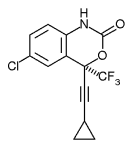The FDA sent the following email on February 4:
The FDA approved on February 1, 2002, a new formulation of Sustiva (efavirenz), a non nucleoside reverse transcriptase inhibitor for the treatment of HIV infection. Sustiva will now be available as a 600 mg tablet to be taken once daily, in combination with a protease inhibitor and/or nucleoside analogue reverse transcriptase inhibitors (NRTIs). Sustiva, will continue to be available in the 50mg, 100, and 200 mg capsules in addition to the new 600 mg tablet.
In addition, the Sustiva label was revised to include new statements in the DOSAGE AND ADMINISTRATION section. The revised statements are shown within >< symbols, below.
'Adults: The recommended dosage of SUSTIVA is 600 mg orally, once daily, in combination with a protease inhibitor and/or nucleoside analogue reverse transcriptase inhibitors (NRTIs). >It is recommended that SUSTIVA be taken on an empty stomach, preferably at bedtime. The increased efavirenz concentrations observed following administration of SUSTIVA with food may lead to an increase in frequency of adverse events. Dosing at bedtime may improve the tolerability of nervous system symptoms.<'
In addition the CLINICAL PHARMAOLOGY and PRECAUTIONS sections have been updated to include drug interaction information on Sustiva with the following medications: St. John's wort, lorazepam, methadone, cetirizine and rifabutin. The ADVERSE REACTION section was also revised to update the incidences of adverse events and laboratory abnormalities seen in clinical trials.
The revised label hyperlinked below in PDF format: www.fda.gov/cder/foi/label/2002/213601bl.pdf
COPYRIGHT 2002 John S. James
COPYRIGHT 2002 Gale Group



